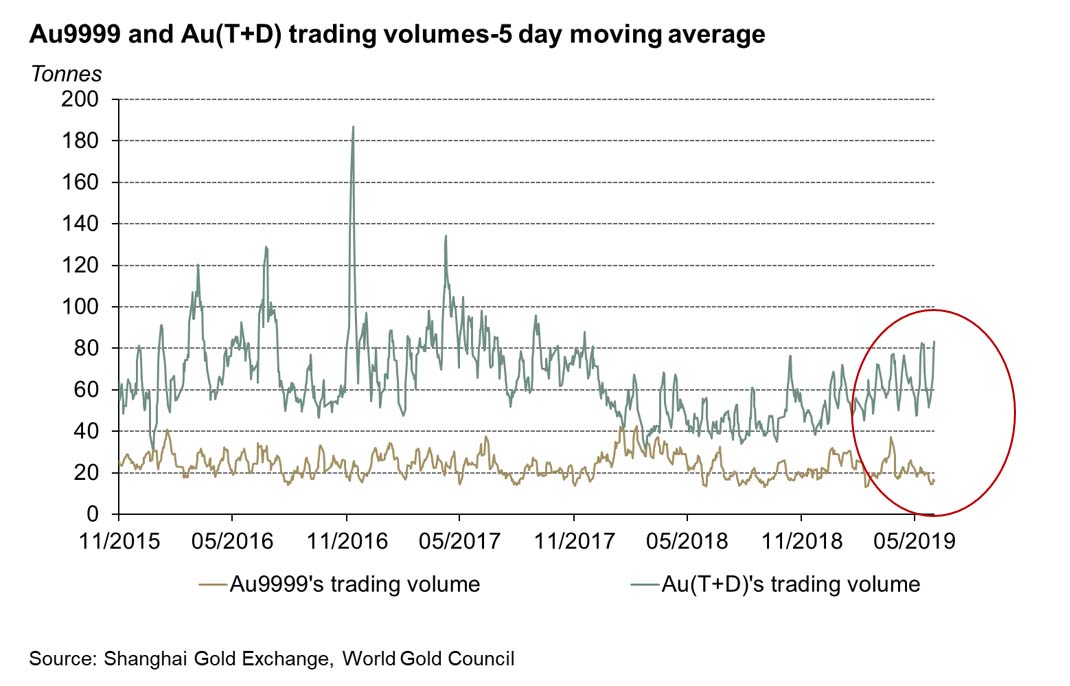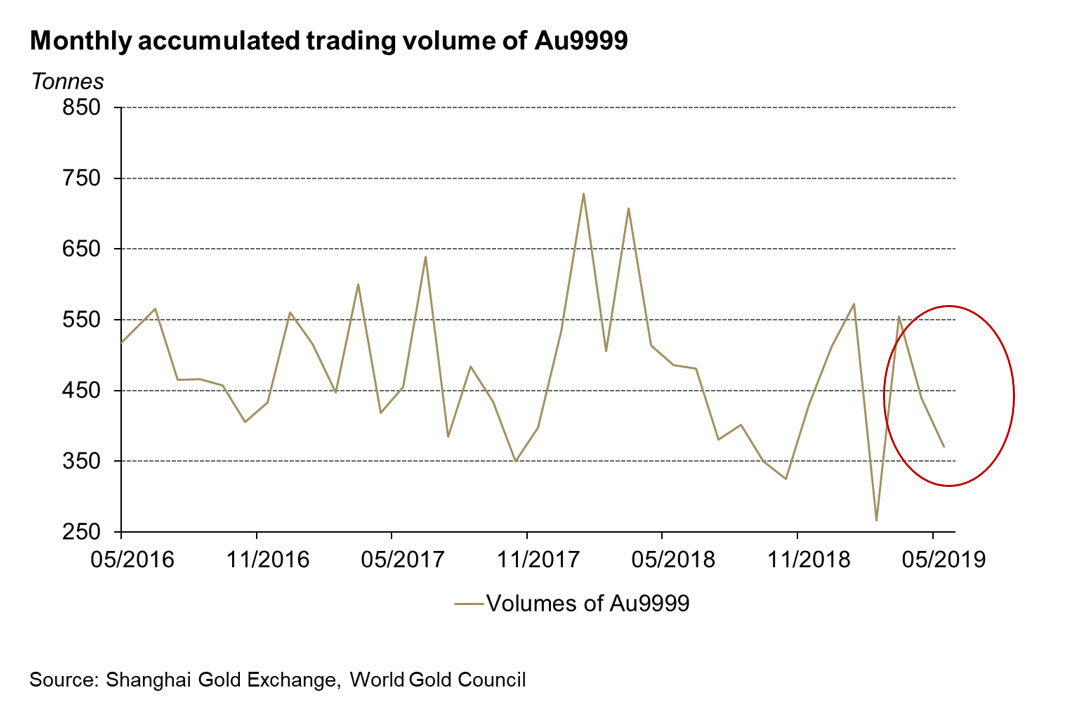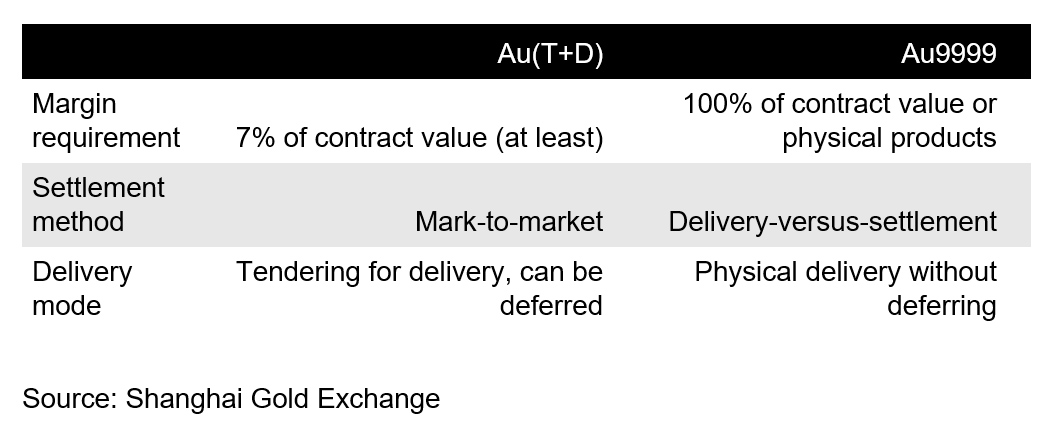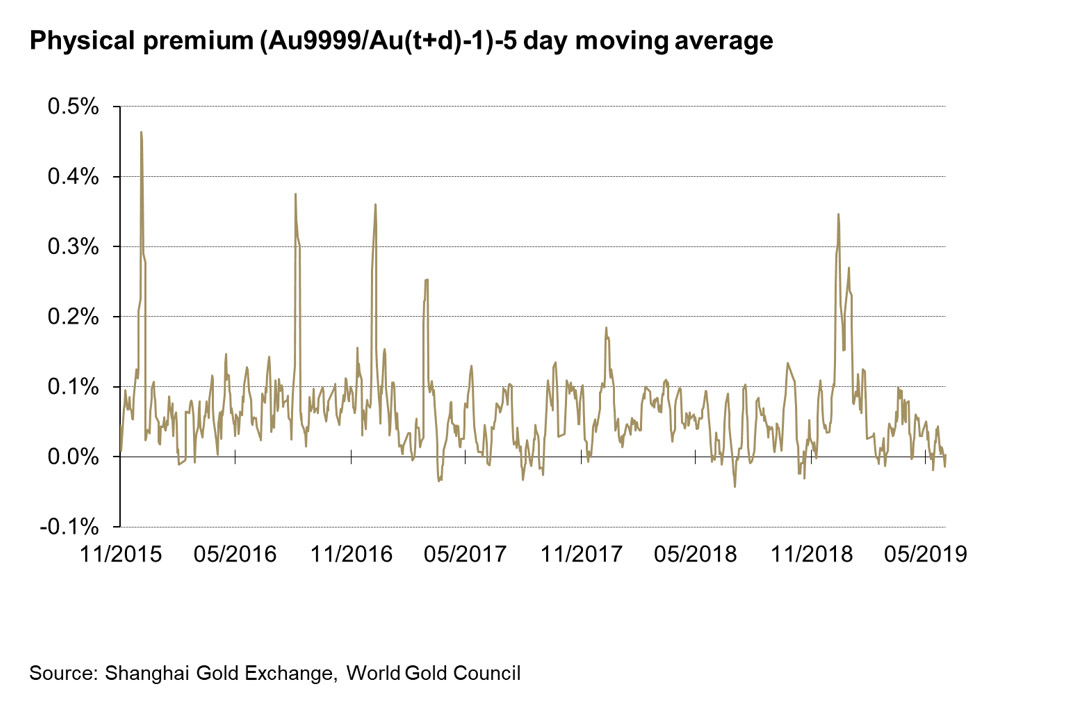In May, against a backdrop of stock market turbulence and a weak CNY, the Shanghai Gold Benchmark price rose by 2.8%. Beyond the price appreciation, there is an interesting story in the two most popular gold contracts traded on the Shanghai Gold Exchange:
- Trading volume of Au(T+D), a margin-traded and the most liquid gold contract traded on the Shanghai Gold Exchange (SGE), reached 1276t in May1, 286t higher y-o-y. It rose almost 50t from the start to the end of the month.
- Trading volume of Au9999, a physical-traded gold contract on the SGE, amounted to 371t in May. This was a 115t decline y-o-y and the fourth lowest monthly accumulated volume in three years2. Also, the volume decreased by 10t from May 6th to May 31st.
To understand why the volumes moved in different directions, we need to take a step back and ask, who’s trading these contracts?
Au(T+D) and Au9999
Demand for Au(T+D) tends to be investment-related, while Au9999 reflects physical demand. This is due to their different contract specifications: the minimum margin requirement for Au(T+D) is only 7% of the contract’s value, whereas to trade Au9999, requires 100% of the contract value in cash or the physical product (1kg, 99.99% purity gold bars).
The two contracts also differ in settlement and delivery modes. Au(T+D) allows traders to trade gold on margin and without delivery of the physical products. It is also marked to market. Therefore, investors usually choose Au(T+D) to magnify expected returns.
On the other hand, the Au9999 contract is designed to meet physical demand. For instance, buyers (fabricators, banks etc) need to prepare the full value of the contract and sellers (refineries etc.) should have the physical gold products to trade, and ownership of the gold must be transferred from seller to buyer once a trade is complete.
What happened in May?
In light of the stock market turbulence and weakening currency, Chinese investors looked to diversify, driving the volume of Au(T+D) – the more investor-friendly gold contract – significantly higher.
On the other hand, May’s AU9999 trading volume was weak due to a large industry inventory that had built up earlier in the year. Jewellers, refineries and other entities had been piling up on stocks in March to gain extra tax credits just before the VAT cut. reducing future physical demand. As a result, loadouts from the SGE in May dropped 95t compared to March and Au9999’s trading volume plummeted3.
The physical premium also reflected the reduced interest in the Au9999 contract as it turned negative at the end of May.
Conclusion
The divergence in Au9999 and Au(T+D)’s trading volumes in May was largely a result of the different needs they serve. Au9999 volumes were soft because of the large gold industry inventory built up in March while Au(T+D) was boosted by speculative investor demand.
[1] - Accumulative daily volumes from May 6th to May 31st (markets were closed between May 1st -May 5th for a national holiday)
[2] - From May 2016 till May 2019
[3] - Loadouts: the amount of gold leaving the Shanghai Gold Exchange’s vault




